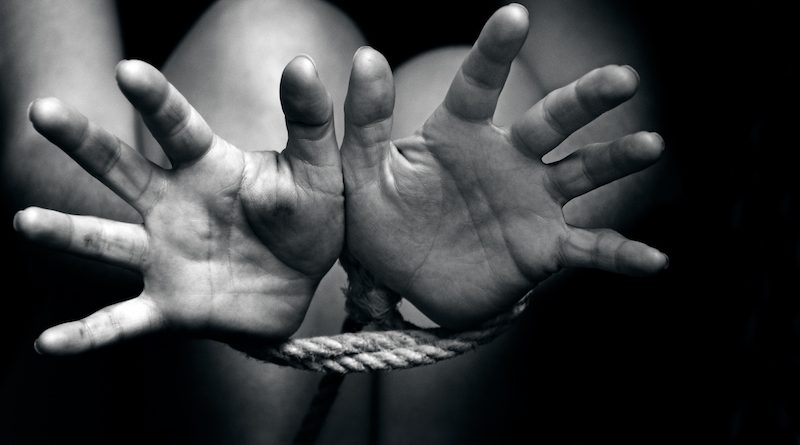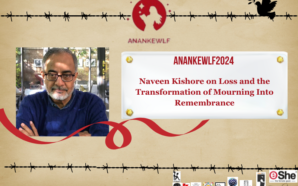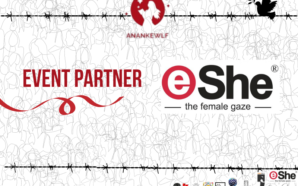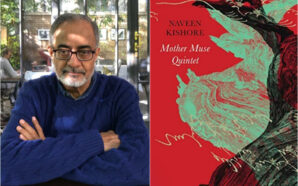There’s a reason why Liam Neeson’s movie “Taken” has captured our attention as its terrifying premise of losing one’s daughter to a powerful international human trafficking syndicate hits a raw nerve in every parent’s mind. And while we would like to think that the government is doing its job to protect its citizens, news of children and youth disappearing and then turning up dead elsewhere with their organs missing, or of young girls and women being kidnapped, never to be found again, haunt us in our subconscious minds. Why? Because human trafficking is a reality.
According to the Human Trafficking Protocol in the 2000 UN Convention on Transnational Organized Crime, the definition of trafficking has three components:
- Actions: the recruitment, transportation, or receipt of persons;
- Means: threat or use of force, coercion or deception; and
- Purpose: exploitation (e.g. sexual exploitation, forced labor, slavery, or removal of organs)
A $32 billion-generating international criminal activity, human trafficking is ranked the third most profitable global illegal industry, falling just after drugs and counterfeiting which rank first and second respectively.
Global statistics show that children, in general, make up about 50 percent of human trafficking victims whereas women and girls make up 80 percent – a significant majority in the statistics of an internationally underreported crime, with women and girls, again, making up 98 percent of the total reported victims of sexual exploitation, which, in turn, is the most common form of human trafficking. “Girls are affected disproportionately, and are trafficked in particular for commercial sexual exploitation and child domestic labour,” states SANTAC, a South Africa-based organization established primarily to combat human trafficking.
Gender discrimination links to women’s victimization
Only a few can directly make a connection between gender discrimination and the fact that there are more female human trafficking victims. If we go back to the basics of structural discrimination against women, we know that women in societies where gender disparity persists at the expense of women, only a minority of women (if any) have access to education, healthcare and other social services. This type of situation puts them at a high risk of illiteracy, teenage pregnancy and/or marriage, domestic violence, and socio-economic exploitation – all factors that contribute to and perpetuate the poverty lifecycle.
But what makes girls and women particularly vulnerable to human trafficking? “Research links the disproportionate demand for female trafficking victims to the growth of certain ‘feminized’ economic sectors (commercial sex, the ‘bride trade,’ domestic service) and other sectors characterized by low wages, hazardous conditions, and an absence of collective bargaining mechanisms. Exploitative employers prefer to use trafficked women—traditionally seen as submissive, cheap, and pliable—for simple and repetitive tasks in agriculture, food processing, labor-intensive manufacturing, and domestic servitude.”
In societies where women, in essence, have no rights and privileges, and where their survival is dictated by the whims of a male dominated society, and where the rights of succession and inheritance run their course along the male bloodline, a girl’s fate is already decided at birth, by her father, brothers, uncles and male cousins. Men will dictate when she marries, whom she marries, what happens to her children, and what happens to her if she were to be divorced by her husband, or becomes a widow.
Girls and women are also sometimes used to pay off family debts and end up becoming indentured servants, or worse, sexual slaves. They have to earn their keep and never gain their freedom since their room and board is barely covered by their wages. They live in fear of their “master,” and long for yet also dread the world outside, fearing the reprisal of an angry master who would successfully hunt them down after their escape. Women, especially those born into oppression and exploitation, are easier to frighten and blackmail, especially if their master threatens other family members in the process. Some victims find it hard to leave their exploiter even when they find opportunities to escape when they have a child or children or another family member being held in the same household or by the same master.
Girls and women are also sometimes used to pay off family debts and end up becoming indentured servants, or worse, sexual slaves. They have to earn their keep and never gain their freedom since their room and board is barely covered by their wages.
According to Radhika Coomaraswamy, former Undersecretary-General of the United Nations, Special Representative for Children and Armed Conflict, in the “INTEGRATION OF THE HUMAN RIGHTS OF WOMEN AND THE GENDER PERSPECTIVE: VIOLENCE AGAINST WOMEN – Report of the Special Rapporteur on violence against women, its causes and consequences:”
“The root causes of migration and trafficking greatly overlap. The lack of rights afforded to women serves as the primary causative factor at the root of both women’s migrations and trafficking in women. While such rights inevitably find expression in constitutions, laws and policies, women nonetheless continue to be denied full citizenship because Governments fail to protect and promote the rights of women. In the home, in the community and in State structures, women are discriminated against on numerous, intersecting levels. The most extreme and overt expression of such discrimination is physical and psychological violence against women. Violence is a tool through which discriminatory structures are strengthened and the more insidious and subtle forms of discrimination experienced by women daily are reinforced. By failing to protect and promote women’s civil, political, economic and social rights, Governments create situations in which trafficking flourishes.”
Women trafficked across regional and international borders usually find themselves trapped under the threat of being jailed and then deported, with all their identification papers, including their passports, taken away from them on the outset.
Women as human traffickers
It must be noted that while girls and women greatly outnumber men when it comes to the incidence of human trafficking, the role of women traffickers also figures prominently in human trafficking operations. In some cases, like in Eastern Europe and Central Asia, “females account for more than 60 percent of convictions for trafficking in persons.”
The United Nations Office on Drugs and Crime states that “Victims of trafficking can be any age, and any gender. However, a disproportionate number of women are involved in human trafficking both as victims and as culprits. Female offenders have a prominent role in human trafficking, particularly where former victims become perpetrators as a means of escaping their own victimization. Most trafficking is carried out by people whose nationality is the same as that of their victim.”
While it may seem difficult to understand at first, female traffickers tend to be former victims themselves who experience some form of misguided “bonded emancipation” or revenge-seeking by becoming part of the initiators and taking on the role of the exploiters. By using their knowledge of the feminine psyche, and with their feminine guile, they are able to victimize both males and females as well as children. Some female traffickers who are forced to traffic other people do so under some form of threat from their own trafficker, or a promise of emancipation. The consensus about female traffickers, however, is that they are just as vicious, if not more so, as their male counterparts.
Tackling the issue at the grassroots level
The cliché about improving the circumstances of women is alive and well. Clichés become clichés for a reason, and it is because they hold some grains of truth.
In countries where gender disparities no longer flourish and gender discrimination is less prevalent, and where women’s socioeconomic status has vastly improved, the incidence of and demand for commercial sex are significantly lower. This translates into fewer possibilities of victimizing girls and women who will end up in forced labor and the commercial sex slave trade.
The role of governments and the society as a whole is underscored in the call of the United Nations Office on Drugs and Crime (UNODC) regarding the importance of research and information sharing in combatting domestic, intra-regional and international human trafficking.
Better economic situations also, quite logically, lead to better educational opportunities and employment prospects so women no longer need to depend on males and the rest of society to dictate whether or not they (and their offspring) will survive and, more importantly, their life chances.
The role of governments and the society as a whole is underscored in the call of the United Nations Office on Drugs and Crime (UNODC) regarding the importance of research and information sharing in combatting domestic, intra-regional and international human trafficking.
Ending human trafficking and the subsequent forms of exploitation that follow requires the commitment and participation of structural forces – governments, the legislature, local crime fighting units, the Interpol, other social institutions and society in general. To eradicate widespread ignorance on what human trafficking is, where and how it happens, and who its victims are, and to stop it in its tracks requires serious, concerted and vigilant efforts from both structures and agents.
About the writer
Claire Dangalan is a Filipina freelance feature writer (a.k.a. Lovely Claire Cachuela) based in Dubai. She is a consummate lover of the arts, especially literature. She taught Cultural Anthropology, Sociology, Humanities and Literature back in the Philippines. Her interests, aside from writing, include the environment, health and fitness, culinary arts, social issues, studies on world view, and “unprofessional photography.”
To connect or read more from Claire:
Blog: Faeriequeenbuknoy
Blog: Enthymememy
Facebook: Reduce your CO2 footprint
Twitter: Alice Red Queen
Twitter: Red CO2 Footprint











